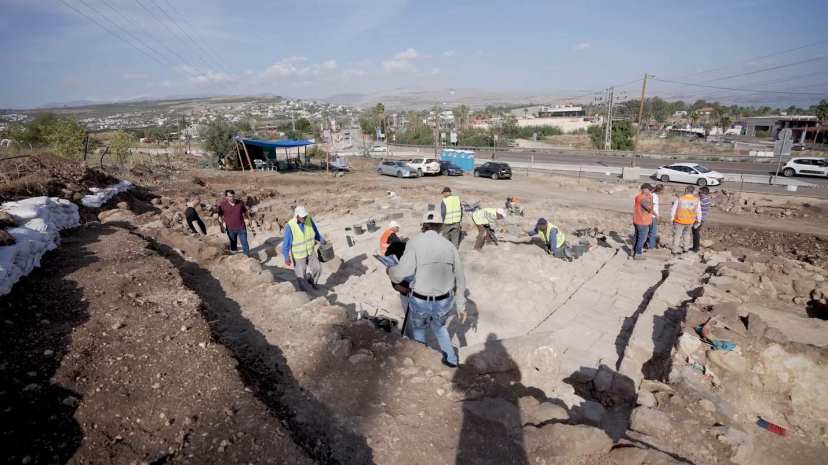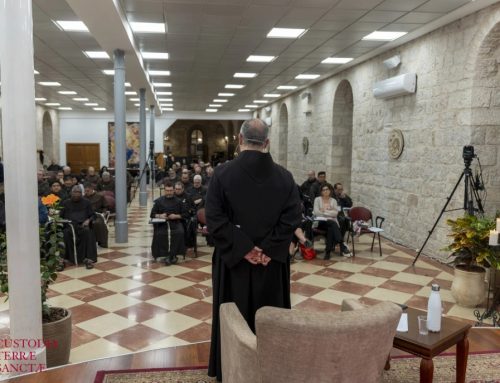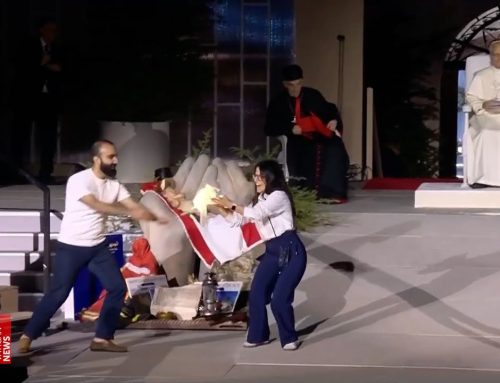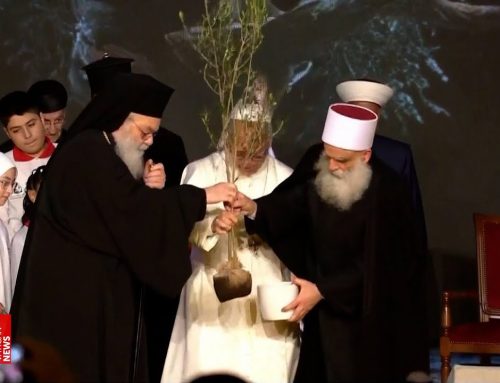A 2,000-year-old synagogue has been found in what is believed to be the hometown of Mary Magdalene.
The synagogue is the second to be found in ancient Magdala, after the first was found in 2009 during the construction of a Catholic visitor’s center in the town – now called Migdal – off the Sea of Galilee in northern Israel.
Dating to the Second Temple period, both synagogues may have been functioning when Jesus visited the town, as recorded in the Gospel of Matthew.
“The fact that we found two synagogues indicates that the Jews of the Second Temple period sought a place for religious and perhaps social gatherings. The fact that we found a carved stone depicting the Temple Menorah in the other synagogue highlights the connection between Jerusalem and subordinate communities,” said and Dina Avshalom-Gorni, director of the excavation on behalf of the University of Haifa.
“The current synagogue we are excavating is located next to a residential street. The synagogue that was excavated in 2009 was surrounded by an industrial area. So the local synagogues were actually built within the social fabric of the settlement,” she added.

The synagogue discovered in 2009 was found alongside Jewish ritual baths (called mikvaot), streets, a marketplace, and industrial facilities. The synagogue included a stone carving of the seven-branched menorah, the first such carving found in a synagogue built while the Temple was still standing, before being destroyed by the Romans in AD 70.
Magdala had been a rebel headquarters for Flavius Josephus, and it is surmised the synagogues were destroyed during the Roman-Jewish conflict that led to the destruction of the Temple.
The synagogue discovered this year was found less 200 meters from the other synagogue.
Avshalom-Gorni noted that the purpose of synagogues was different in the Second Temple era, since most Jewish rituals would take place at the Temple in Jerusalem. Synagogues would have been seen more as meeting houses for social activities or religious studies.
“We can imagine Mary Magdalene and her family coming to the synagogue here, along with other residents of Migdal, to participate in religious and communal events,” the archeologist said.
The finding in Magdala is the first time two synagogues have been found in the same Second Temple era town.
“Even in the later villages of the 5th or 6th century AD, we don’t have two synagogues in one place. Here it’s unique,” Avshalom-Gorni said in a Facebook interview with Father Eamon Kelly, the Vice Director of Magdala, the Catholic guest house which exists at the site of the first synagogue discovered, and is just across the road from the new synagogue discovery.
“We don’t really have the answer. From the Jewish and Christian sources, we understand this synagogue is a gathering house,” she said.
“We know from the sources this was a very large village, and here we are excavating a very big neighborhood. We presume that this synagogue served these people that lived in this neighborhood,” she continued, adding that it is possible that every neighborhood would have its own meeting house.
Avshalom-Gorni noted the two synagogues have the same shape — a square central meeting hall and two rooms on the side, with a plaster shelf in one of the side rooms. This is presumed to be where the Torah scrolls were kept.

In the New Testament, Jesus preached and taught in the synagogues of the Galilee region, and the beginning of his public ministry in the Gospel of Luke was marked by him reading from a scroll of the prophet Isaiah in the synagogue in Nazareth.
Magdala is believed by many scholars to be the coastal town Jesus visited by boat after the feeding of the 4,000 recorded in the Gospels of Mark and Matthew. However, in the accounts Jesus is questioned by the Pharisees and Sadducees in the town, and leaves it, again by boat without any record of him visiting the town’s synagogues.
https://cruxnow.com/






